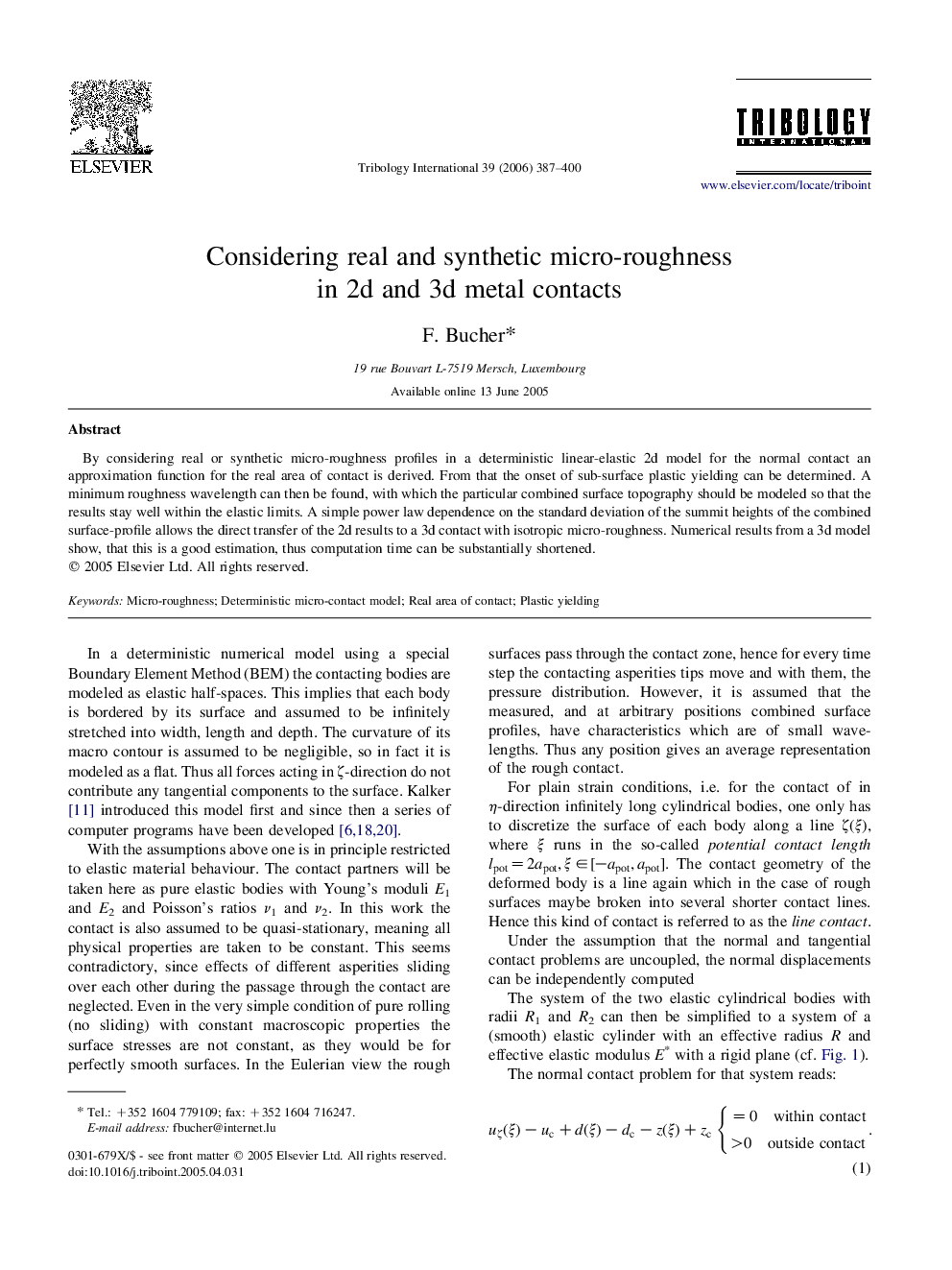| Article ID | Journal | Published Year | Pages | File Type |
|---|---|---|---|---|
| 616804 | Tribology International | 2006 | 14 Pages |
Abstract
By considering real or synthetic micro-roughness profiles in a deterministic linear-elastic 2d model for the normal contact an approximation function for the real area of contact is derived. From that the onset of sub-surface plastic yielding can be determined. A minimum roughness wavelength can then be found, with which the particular combined surface topography should be modeled so that the results stay well within the elastic limits. A simple power law dependence on the standard deviation of the summit heights of the combined surface-profile allows the direct transfer of the 2d results to a 3d contact with isotropic micro-roughness. Numerical results from a 3d model show, that this is a good estimation, thus computation time can be substantially shortened.
Related Topics
Physical Sciences and Engineering
Chemical Engineering
Colloid and Surface Chemistry
Authors
F. Bucher,
